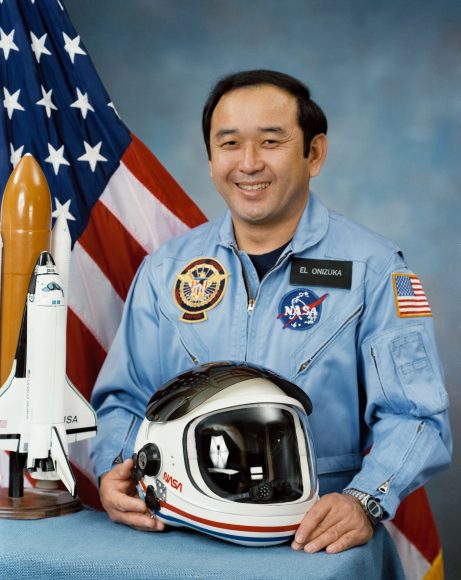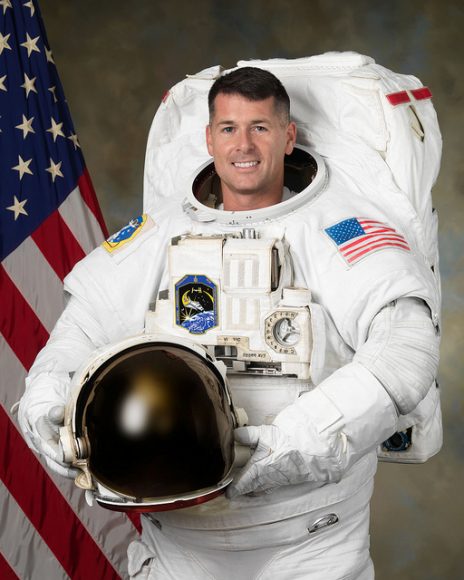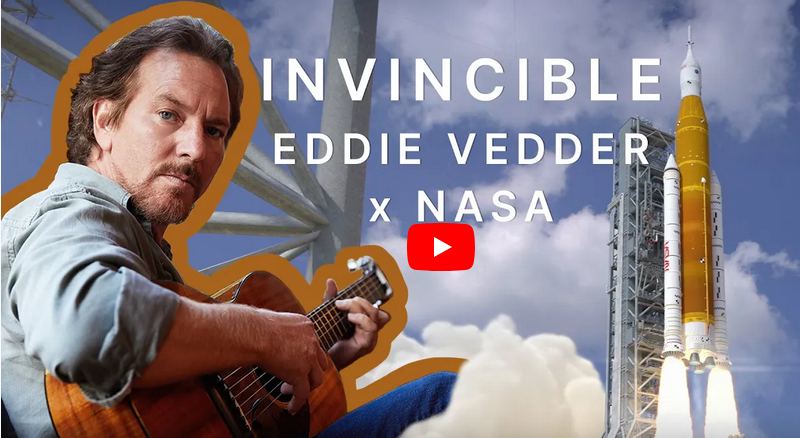For fans of Eddie Vedder, Pearl Jam, and space exploration, this video will require very little explanation. But just in case some people haven’t seen it yet, this musical performance was a tribute to the long-awaited roll-out of the fully-stacked Space Launch System (SLS) at the NASA Kennedy Space Center in Florida. It’s guaranteed to give you goosebumps and maybe even bring a tear to your eye!
Continue reading “Pearl Jam's Eddie Vedder Provides the Music for NASA's new SLS Video”31 Years After Disaster, Challenger Soccer Ball Finally Gets To Orbit

The Challenger disaster is one of those things that’s etched into people’s memories. The launch and resulting explosion were broadcast live. Professional astronauts may have been prepared to accept their fate, but that doesn’t make it any less tragic.
There’ve been fitting tributes over the years, with people paying homage to the crew members who lost their lives. But a new tribute is remarkable for its simplicity. And this new tribute is all centred around a soccer ball.
Ellison Onizuka was one of the Challenger seven who perished on January 28, 1986, when the shuttle exploded 73 seconds into its flight. His daughter and other soccer players from Clear Lake High School, near NASA’s Johnson Space Center, gave Ellison a soccer ball to take into space with him. Almost unbelievably, the soccer ball was recovered among the wreckage after the crash.

The soccer ball was returned to the high school, where it was on display for the past three decades, with its meaning fading into obscurity with each passing year. Eventually, the Principal of the high school, Karen Engle, learned about the significance of the soccer ball’s history.
Because of Clear Lake High School’s close proximity to the Johnson Space Center, another astronaut now has a son attending the same school. His name is Shane Kimbrough, and he offered to carry a memento from the high school into space. That’s when Principal Engle had the idea to send the soccer ball with Kimbrough on his mission to the International Space Station.

The causes of the Challenger accident are well-known. An O-ring failed in the cold temperature, and pressurized burning gas escaped and eventually caused the failure of the external fuel tank. The resulting fiery explosion left no doubt about the fate of the people onboard the shuttle.
It’s poignant that the soccer ball got a second chance to make it into space, when the Challenger seven never will. This tribute is touching for its simplicity, and is somehow more powerful than other tributes made with fanfare and speeches.
It must be difficult for family members of the Challenger seven to see the photos and videos of the explosion. Maybe this simple image of a soccer ball floating in zero gravity will take the place of those other images.
The Challenger seven deserve to be remembered for their spirit and dedication, rather than for the explosion they died in.
These are the seven people who perished in the Challenger accident:
- Ellison Onizuka
- Francis R. Scobee
- Michael J. Smith
- Ronald McNair
- Judith Resnik
- Gregory Jarvis
- Christa McAuliffe
A Tribute to MESSENGER
If you’re reading this then you probably love space exploration, and if you love space exploration then you know how awesome the MESSENGER mission is — the incredibly successful venture by NASA, Johns Hopkins University Applied Physics Laboratory, and the Carnegie Institution of Washington to orbit and study the first rock from the Sun in unprecedented detail. Since entering orbit around Mercury on March 18, 2011, MESSENGER has mapped nearly 100% of the planet’s surface, found unique landforms called hollows residing in many of its craters, and even discovered evidence of water ice at its poles! That’s a lot to get accomplished in just two years!
The video above, assembled by Mark ‘Indy’ Kochte, is a tribute to the many impressive achievements of the MESSENGER mission, featuring orbital animations (love that MESSENGER shimmy!), surface photos, and the approach to the planet. Enjoy!
Images and animation stills courtesy NASA/Johns Hopkins University Applied Physics Laboratory/Carnegie Institution of Washington. Music: “Mercury Ridge” by Simon Wilkinson. Video creation and time-lapse animations by Mark ‘Indy’ Kochte.

